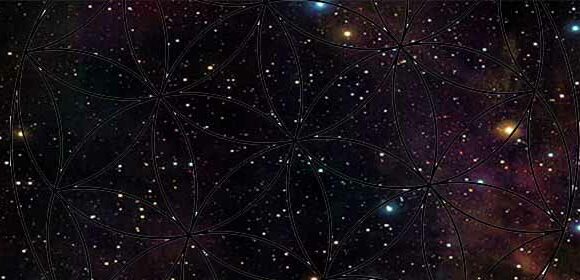In today’s world, it’s easy to feel overwhelmed by a sense of illusion. From social media to advertising, the line between reality and fantasy seems increasingly blurred. With filtered images, curated lifestyles, and virtual realities, many people wonder if we’re living in a world of “fake make-believe.” But this question goes deeper than just technology or media—it touches on the spiritual essence of what it means to live authentically in a world that often feels unreal.
Let’s explore this idea from a spiritual perspective, examining how ancient wisdom and modern practices guide us through a world that may seem filled with illusions.
Introduction: The Illusions of Modern Life
Every day, we are surrounded by things that look real but aren’t. Whether it’s Instagram influencers presenting perfect lives or online avatars creating virtual worlds, there’s a strong argument that much of what we experience isn’t genuine. This raises an important question: How do we discern what is real from what is fake?
From a spiritual perspective, this question has been asked for centuries. Many spiritual traditions—whether Buddhism, Christianity, or Hinduism—teach that the material world is, to some extent, an illusion. They emphasize the importance of looking beyond the surface and connecting with a deeper, eternal truth. In today’s era of digital make-believe, these teachings are more relevant than ever.
Section 1: The Spiritual Concept of Illusion (Maya)
In Hinduism and Buddhism, there is a concept called *maya*, which refers to the illusionary nature of the world. The idea is that the physical world, as we perceive it, is not the ultimate reality. Instead, it’s a veil that hides the deeper truths of existence. According to these traditions, we often get caught up in the illusion of the material world, mistaking it for the ultimate reality. This keeps us trapped in cycles of desire, disappointment, and suffering.
In today’s society, this concept of *maya* can be seen in how we interact with the media, consumerism, and even social relationships. Take, for example, the way we consume social media. It often presents an exaggerated, hyper-real version of life. Influencers display glamorous lifestyles that may not be authentic, leading people to compare themselves to an unrealistic standard. This pursuit of an artificial ideal can create feelings of inadequacy, anxiety, and disconnection from our true selves.
From a spiritual perspective, recognizing the illusionary nature of this is the first step toward awakening. When we become aware of the false narratives around us, we can begin to seek what is truly meaningful and real—whether that’s deeper connections with others, a sense of purpose, or a relationship with the divine.
Section 2: The Masks We Wear—Authenticity vs. Illusion
Another way to approach this idea of living in a make-believe world is through the masks we wear. In many spiritual traditions, the self is seen as something more profound than the roles we play in daily life. In the ancient Greek theatre, actors wore masks to depict different characters, and this metaphor applies well to modern life. Whether it’s at work, in relationships, or online, we often adopt personas that may not reflect our true selves.
In today’s digital age, these masks are everywhere. Social media allows us to project a curated version of ourselves to the world, one that may not reflect the fullness of who we are. Spiritually speaking, this can be dangerous because it distances us from our true nature. The more time we spend pretending to be something we’re not, the further we drift from our inner truth.
Take the teachings of Jesus, for example. In the New Testament, Jesus speaks often about the importance of sincerity and inner purity, urging people to avoid hypocrisy. “Woe to you, teachers of the law and Pharisees, you hypocrites! You are like whitewashed tombs, which look beautiful on the outside but on the inside are full of dead men’s bones” (Matthew 23:27). This call to authenticity is timeless, urging us to look inward rather than focusing on outward appearances.
Section 3: Escaping the Illusion—The Spiritual Practice of Mindfulness
So how do we escape the fake and make-believe aspects of life? Spiritual traditions often offer practices like mindfulness, meditation, or prayer as ways to reconnect with reality. These practices encourage us to be present in the moment, to observe the world without judgment, and to connect with something deeper.
In Buddhism, mindfulness is used to pierce the veil of illusion, helping practitioners become aware of their thoughts, emotions, and the present moment as it truly is—not as they wish it to be. Similarly, in Christianity, prayer is seen as a way to align oneself with God’s will, to transcend the distractions of the material world and find peace in divine presence.
An example of this in everyday life might be the practice of “digital detoxing”—taking intentional breaks from technology to reconnect with the world around us. By spending time in nature, engaging in face-to-face conversations, or simply practicing silence, we can begin to break free from the fake realities that dominate our digital lives.
Conclusion: Living Authentically in a World of Illusions
In a world filled with artificial realities, whether through media, consumerism, or social pressures, it’s easy to feel disconnected from what’s real. However, from a spiritual perspective, the material world has always been seen as somewhat illusory. What’s important is not escaping the world, but learning how to see through its illusions and live authentically.
By embracing practices that ground us in reality—mindfulness, spiritual reflection, and sincere connection with others—we can navigate this world of make-believe without losing touch with our true selves. Life may be filled with distractions and illusions, but the spiritual path teaches us that what is real and meaningful is always within reach, if only we take the time to look beyond the surface.








